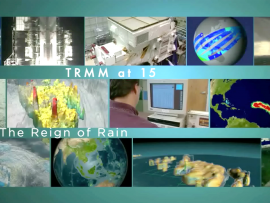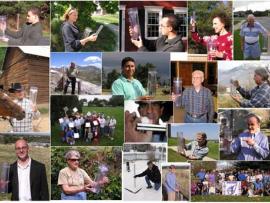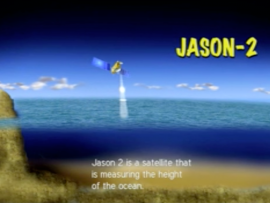Browse ESS2.D Resources
Browse ESS2.D Resources
Primary Topic:
Subtopics:
Type:
Keywords:
Summary:
This IQuest has been developed to help you explore the wild and changing world of weather and climate. Weather and climate are shaped by complex interactions involving sunlight, the ocean, the atmosphere, clouds, ice, land, and life forms.
Primary Topic:
Subtopics:
Type:
Keywords:
Summary:
Researchers need accurate and timely rainfall information to better understand and model where and when severe floods, frequent landslides and devastating droughts may occur, and GPM’s global rainfall data will help provide that information.
Primary Topic:
Subtopics:
Type:
Keywords:
Summary:
This video (4:56) uses a combination of cartoon characters, a scientist, and a series of different Earth-observing satellites with data animations to teach the various parts of the water cycle.
Primary Topic:
Subtopics:
Type:
Keywords:
Summary:
Profile of Steve Nesbitt, a professor of Atmospheric Sciences at the University of Illinois and a mission scientist on GPM ground validation field campaigns.
Primary Topic:
Subtopics:
Type:
Keywords:
Summary:
This video celebrates the 15th anniversary of the Tropical Rainfall Measuring Mission (TRMM). Project Scientist Scott Braun looks back at TRMM's legacy and a few of the major scientific milestones the satellite has helped achieved.
Primary Topic:
Subtopics:
Type:
Keywords:
Summary:
The activities in this guide will help students understand variations in environmental parameters by examining connections among different phenomena measured on local, regional and global scales.
Primary Topic:
Subtopics:
Type:
Keywords:
Summary:
CoCoRaHS is a Citizen Science organization that helps participants collect and share precipitation data. They also assist teachers in learning how to install and use rain gauges with their students. Learn how to collect and submit measurements to CoCoRaHS
Primary Topic:
Subtopics:
Type:
Keywords:
Summary:
Learn how NASA uses a data-collecting sensor, Clouds and Earth’s Radiant Energy System, or CERES, to study clouds and make accurate measurements of energy leaving Earth.
Primary Topic:
Subtopics:
Type:
Summary:
Learn how the satellite, Jason 2, is able to use radar waves to determine the height of sea levels and evaluate the effects of global warming.
Primary Topic:
Subtopics:
Type:
Keywords:
Summary:
Ocean circulation plays a key role in distributing solar energy and maintaining climate, by moving heat from Earth's equator to the poles. Aquarius salinity data, combined with data from other sensors, will give us a clearer picture of how the ocean works











